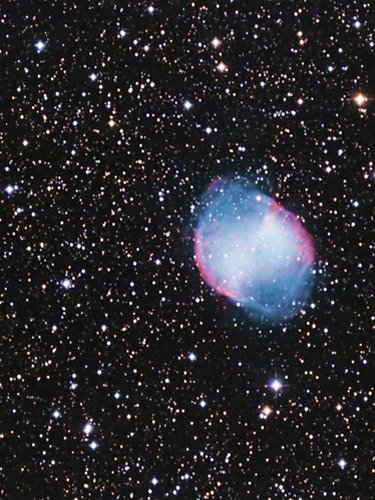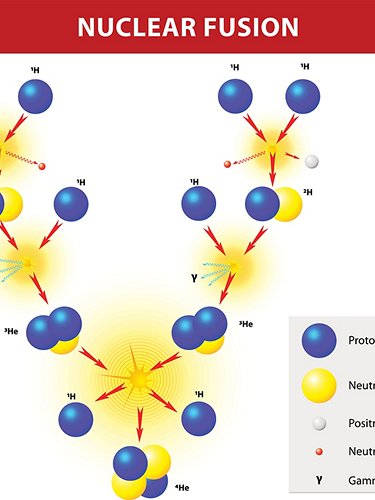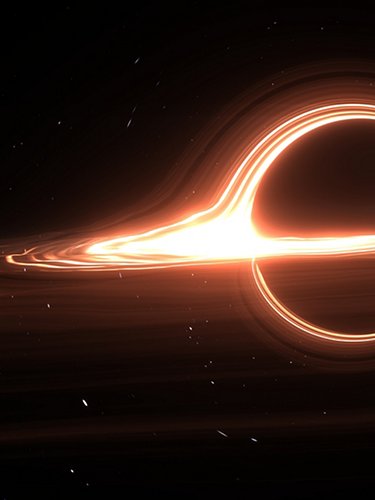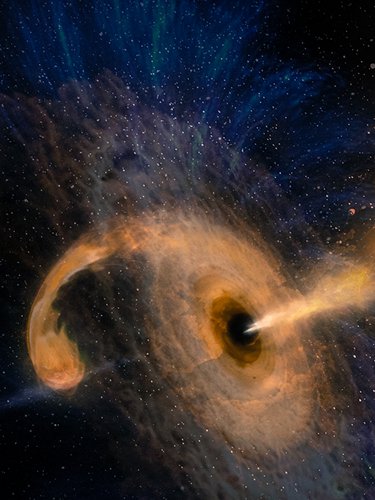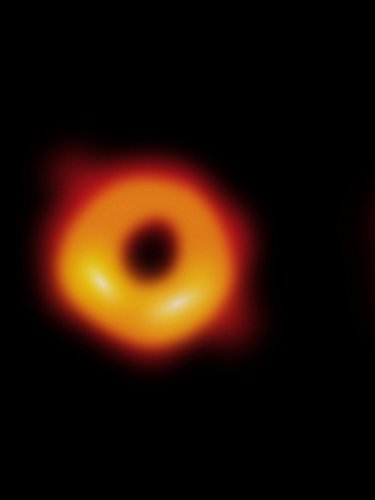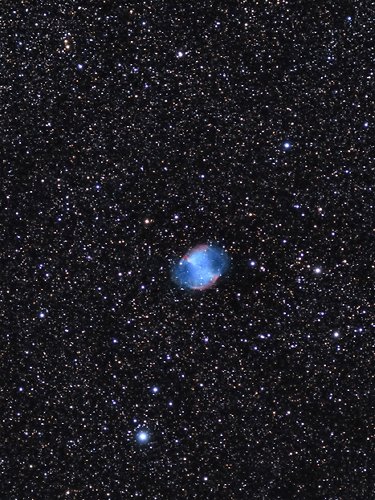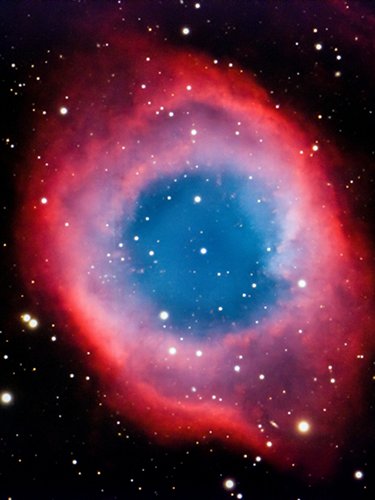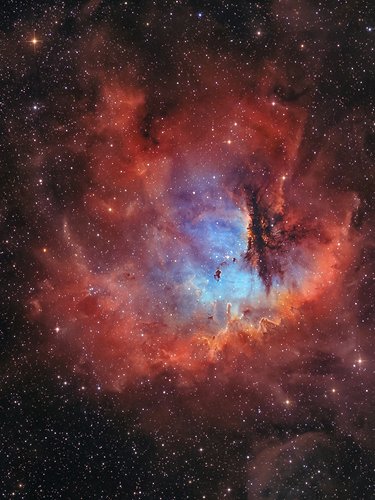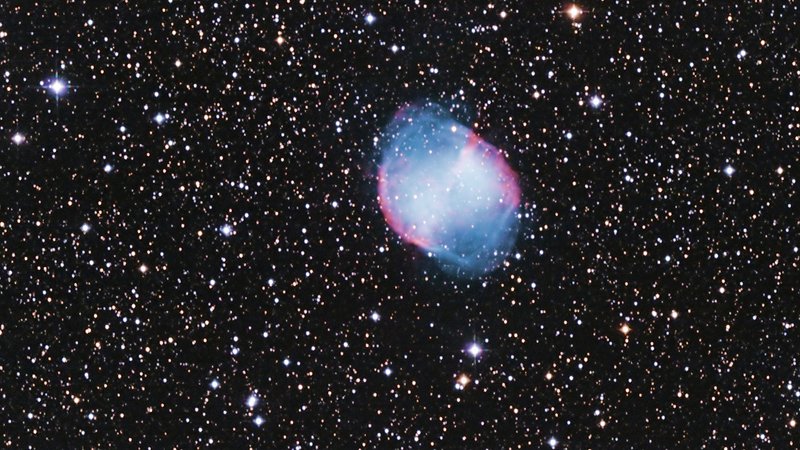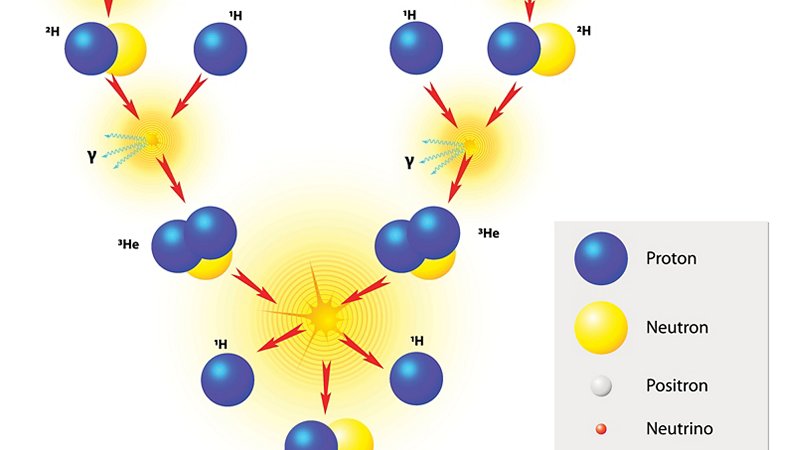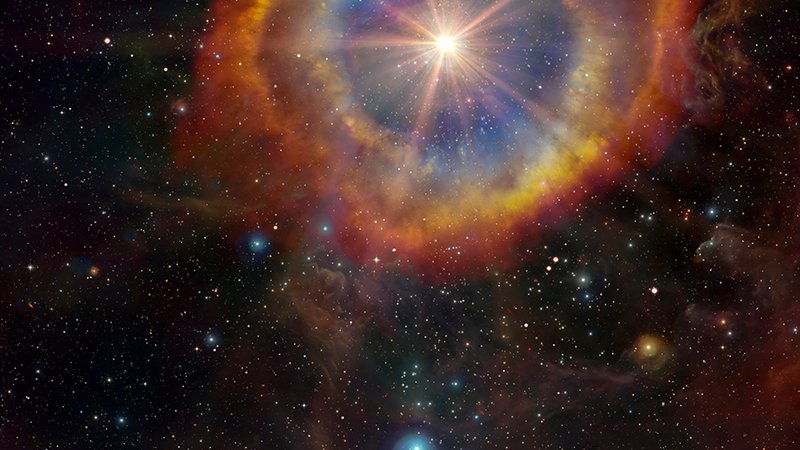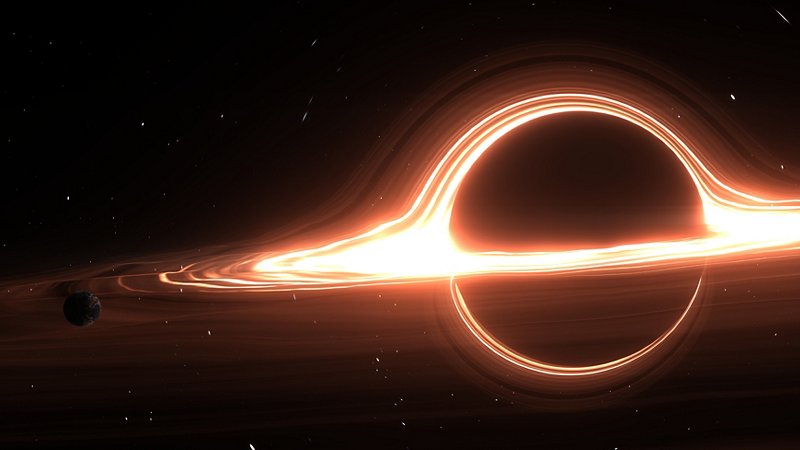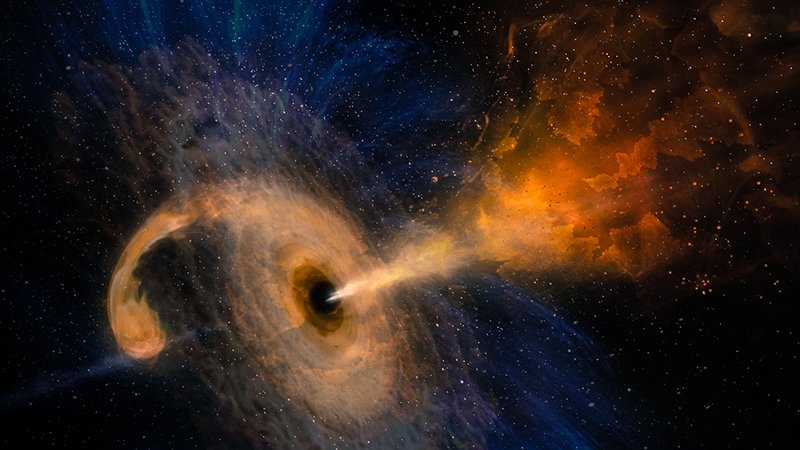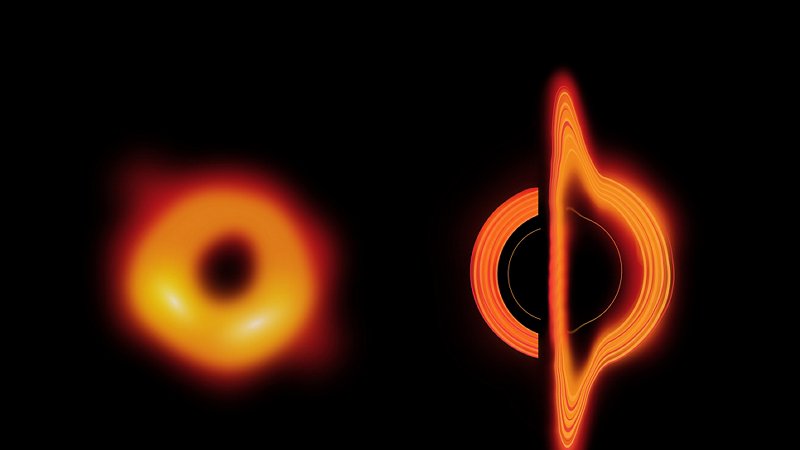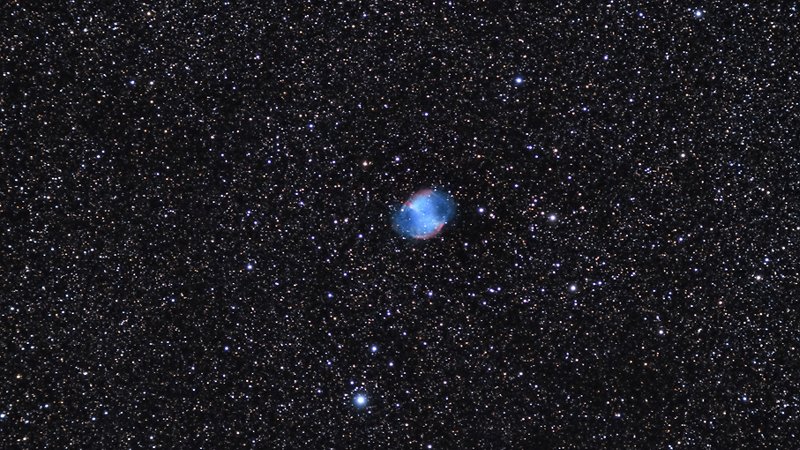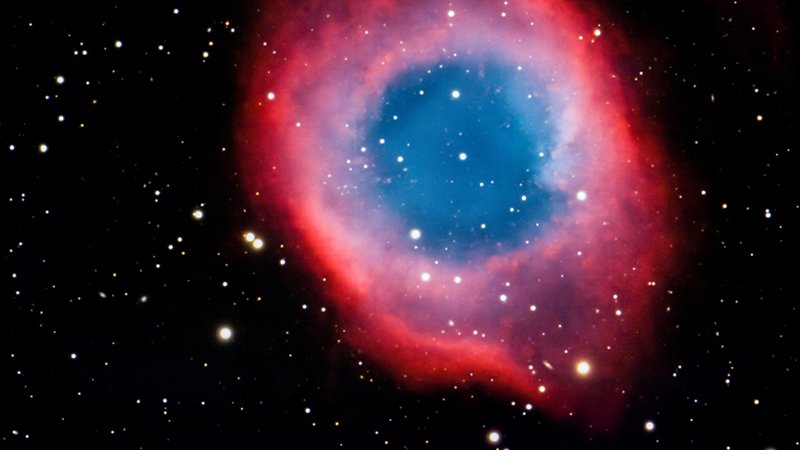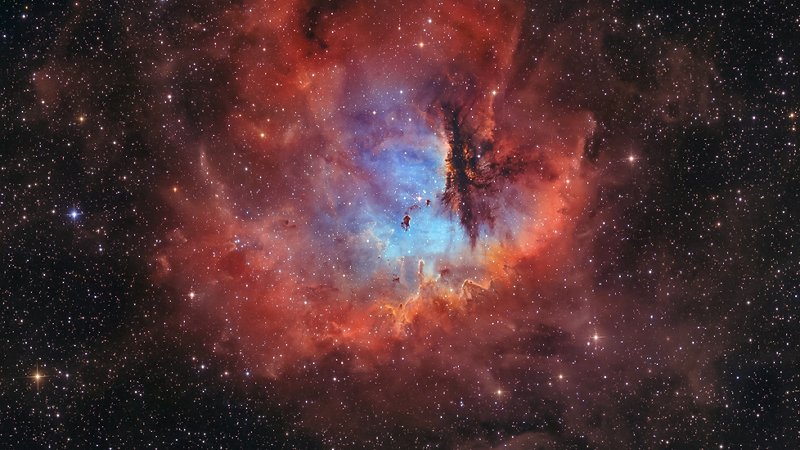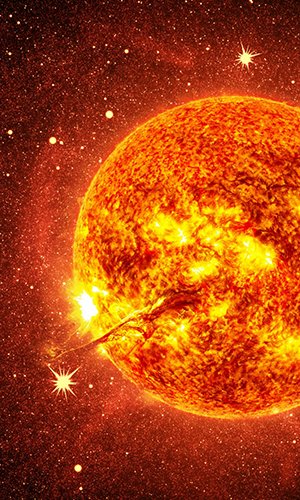While the mass of one star may vary greatly from that of another, their chemical composition changes little. Stars are made up of about 75 percent hydrogen (by far the most abundant element in the entire Universe), 23 percent helium, and only 2 percent heavier elements. Stars resemble nuclear power plants, in which nuclear fusion reactions take place that transform matter into energy according to Einstein's famous equation: E=mc2 (E is the energy, m the mass of the star and c the speed of light in a vacuum). This formula establishes the relationship between the energy and mass of a physical system. The energy produced within a star is emitted in the form of gamma rays (photons), by far the most powerful electromagnetic radiation.

